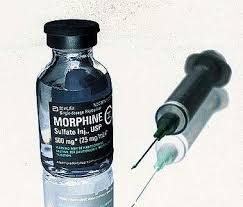Brett Greenky, MD
Kimberley Murray, RN
Everyone undergoing joint replacement surgery is concerned with preventing the need for blood transfusion. There are compelling reasons to minimize the need for blood transfusions which include:
· Increased postoperative infection rates
· Possible disease transmission
o Anxiety about the risk of transfusion related problems include the unlikely possibility of disease infection, however, the risk of HIV or Hepatitis B or C transmission is quite remote
· Allergic reactions
· Potential for administration errors
· Lung injuries
· Increased postoperative length of stay in the hospital
· High cost
o Approximately $200 for the blood unit itself but with processing and handling the overall cost is upwards of $1000 per unit.
Let’s examine the HISTORICAL facts:
1. No single transmission of HIV (the AIDS virus) has been reported in a joint replacement surgery associated with a transfusion in the past 15 years according to the Centers for Disease Control (CDC). This is because of the now routine and sophisticated testing of donated units over the last 15 years.
2. There is no test for Hepatitis C presence in donated blood. Although the transmission risk is remote, a very small risk persists. Donators of blood units are questioned about the risk factors for the presence of Hepatitis C and are subsequently excluded from donation.
3. The risk of a transfusion related problem resulting from receiving a transfusion from a family member is the same as it is for receiving a blood transfusion from the general public. Family designated donation for upcoming surgery is NOT safer than getting blood from the general American Red Cross blood bank. As a result of this fact, nearly all large joint replacement programs have discontinued designated donor programs.
4. Donating your own blood to be available for later surgery (Autologous Blood Donation) has NOT been successful in reducing the need for blood transfusion from the bank. Additionally, autologous transfusion is not without health risks:
· Lowering your blood count near the time of your surgery
· Decreased effectiveness related to cold storage and processing
· Potential clerical/handling errors
As a result, nearly all large joint replacement programs have discontinued autologous donation programs.
What is the present “State of the Art” nationally for Joint Replacement Programs?
1. A national transfusion rate of approximately 25% is noted for joint replacement surgery. The rate of transfusion is a slightly higher for total hip replacement than for total knee replacement.
2. Patients that require blood transfusions have slightly longer hospital stays than patients that do not need a transfusion.
3. Blood products are a precious resource in which the demand exceeds the available supply. Transfusions are costly to the health care system when used for elective surgery and also deplete our supply of banked blood for emergency situations.
The St. Joseph’s Hospital Health Center Joint Replacement Program has successfully and dramatically reduced the need for transfusion far beyond the average hospital. We have done this with a multifaceted approach. Our goal is to even further reduce the need for transfusion. We were recently awarded the 2011 Red Cross Home Town Hero Award for a 400% reduction in the use of blood products for patients in our joint replacement program! The transfusion rate at St. Joseph’s for our total joint replacement patients is below 8% which equates to less than 0.2 units of packed red blood cells transfused per patient.
How this was achieved:
(Preoperative, Intraoperative, and Postoperative Measures)
1. Development of a formal Blood Management Program in 2005 which includes a dedicated blood conservation nurse.
2. Preoperative screening for all elective joint replacement patients includes testing of Iron reserves and reticulocyte counts (young red blood cells). Patients who are anemic or low in Iron stores receive supplements PRIOR to the surgery to boost them.
3. Appropriate anemic patients receive Erythropoietin, a natural hormone that boosts red blood cell counts prior to surgery.
4. Preoperative nutritional counseling and guidance to build iron stores
5. Blood salvage machines collect, wash, and re-transfuse the patients’ red blood cells both during and after surgery, minimizing the amount of lost cells.
6. Use of an intraoperative tourniquet during knee replacement surgery.
7. Spinal anesthesia administration
8. Maintenance of normothermia (body temperature regulated within a controlled range)
9. Our newest strategy involves the use of Tranexamic Acid, a medicine which helps reduce operative bleeding, during the operation
10. Elimination of “routine” blood transfusions and instead transfusing patients when their symptoms/condition necessitate it
Our goal is to totally eliminate the need for transfusions for elective joint replacement surgery while continuing to provide safe and optimal surgical outcomes for our patients.









